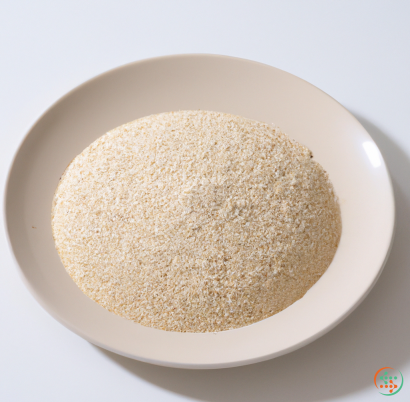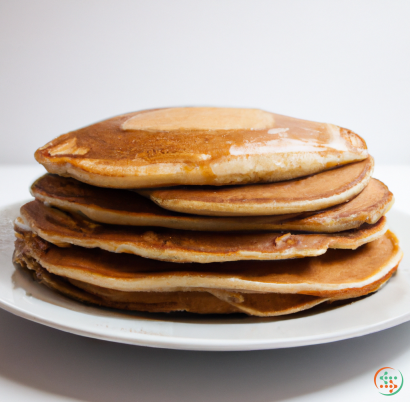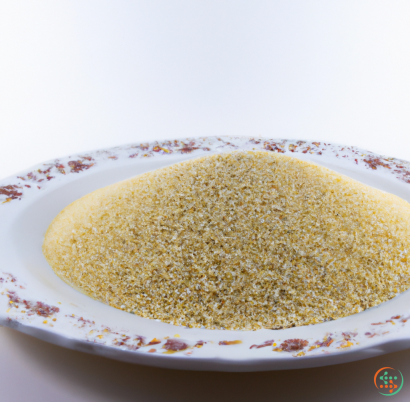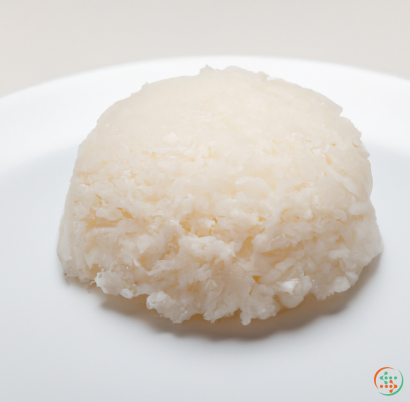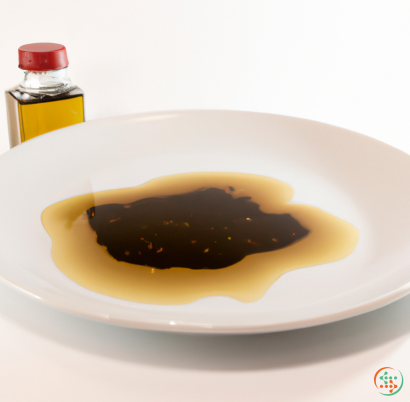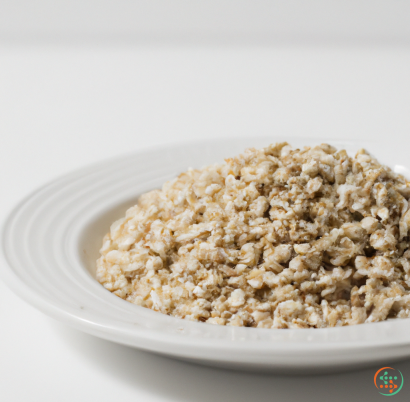Sugar Substitute (sucralose)
Sugar is known to be one of the ultimate sources of all-natural sweetness. However, if you want to enjoy sweetness without adding too much to your calorie and sugar loads, sugar substitutes are the ideal option. Sucralose is amongst the most commonly used sugar substitutes, and is often associated with the sugar-like taste that it adds to various recipes and beverages. In this blog post, we’ll explore what sucralose is and how it can help you enjoy all the sweetness without compromise!
Sucralose, commonly sold as Splenda, is an artificial sweetener made from sugar. It is made through a process called "chlorination", which strips three key molecules from the sugar molecule's chemical structure. This process changes the sugar's molecular structure and turns it into a molecule that is about 600 times sweeter than regular sugar. This means that when using sucralose, you only need a significantly smaller amount of sweetener compared to natural sugar to achieve the same level of sweetness.
This makes sucralose a popular choice for those watching their sugar and calorie intake. Unlike other sugar substitutes, such as aspartame or saccharin, sucralose is not easily broken down by the body, since it is made up of larger molecules that pass undigested. As a result, sucralose does not add any calories or carbohydrates to your diet, and it does not raise your blood sugar levels like natural sugar does.
Furthermore, this particular sugar substitute has a longer shelf life than other types of artificial sweeteners. It is highly stable in heat and can be mixed with many different ingredients, making it ideal for baking, although it may slightly affect the texture of a product. Sucralose is also considered a safe option for those with diabetes, since it does not cause a spike in blood glucose levels.
Generally available in liquid, granulated, and powdered form, sucralose can be found as an ingredient added to numerous food and beverage products, including flavoured yogurt, sparkling drinks, and chewing gum. It can also be used in baking recipes for cakes and cupcakes, as well as in ice cream and frozen desserts.
It is important to note, however, that this sugar substitute is not without its drawbacks. Although the FDA has approved the use of sucralose in food, research by the Center for Science in the Public Interest (CSPI) found that it may cause gastrointestinal issues in some people. Further, the long-term safety of sucralose is yet to be determined.
Despite its potential downsides, sucralose is still considered to be a useful sugar substitute as it can provide sweetness without the added calories or carbs. That said, it’s always best to check with a doctor or a nutritionist before relying on this particular sweetener.
In conclusion, sucralose can be a convenient and reliable way to enjoy sweetness while limiting your sugar and calorie intake. However, it’s important to make sure that you’re not consuming it in large quantities and to ensure it’s suitable for your diet and overall health. As with anything else, moderation is key, and it’s always a good idea to speak to your doctor to get personalized diet advice.
Sucralose is a sugar substitute that is made from sugar. It is about 600 times sweeter than sugar and is used in many food and beverage products. Sucralose is made by adding chlorine to sugar. This changes the structure of the sugar molecules and makes them more stable, so they don’t break down as easily in the body. Sucralose is not metabolized by the body, so it doesn’t affect blood sugar levels.
Sucralose is found in many food and beverage products, including baked goods, breakfast cereals, chewing gum, fruit juices, gelatins, hard candies, ice cream, jams and jellies, processed fruits, syrups, and tabletop sweeteners. It is also used in some pharmaceuticals and personal care products.
When sucralose is added to food, it doesn’t change the way the food tastes, smells, or looks. That’s because it’s only about one-tenth as sweet as sugar, so you need less of it to get the same level of sweetness.
Sucralose is made through a process called chlorination. Chlorination is a way of adding chlorine to sugar molecules. This changes the structure of the sugar molecules and makes them more stable, so they don’t break down as easily in the body.
The process of making sucralose begins with sugar cane or sugar beets. The sugar is extracted from the plants and then purified. Once the sugar is purified, it is mixed with chlorine. The chlorine reacts with the sugar to form two new molecules: chlorocitric acid and 1,6-dichloro-1,6-dideoxy-beta-D-fructofuranosyl-4-chloro-4-deoxy-alpha-D-galactopyranoside.
These two molecules are then separated and the 1,6-dichloro-1,6-dideoxy-beta-D-fructofuranosyl-4-chloro-4-deoxy-alpha-D-galactopyranoside is dried and ground into a powder. This powder is what we know as sucralose.
Once sucralose is made, it is added to food and beverage products. It is often used in place of sugar or other sweeteners. It can be found in a variety of products, including baked goods, breakfast cereals, chewing gum, fruit juices, gelatins, hard candies, ice cream, jams and jellies, processed fruits, syrups, and tabletop sweeteners.
Sucralose is also used in some pharmaceuticals and personal care products. It is often added to mouthwashes, toothpastes, and other dental products. It is also used in some contact lens solutions.
Sucralose is safe for most people to consume. The FDA has determined that it is safe for use in food and beverage products. The European Food Safety Authority has also determined that sucralose is safe for use in food and beverage products.
Sucralose is not metabolized by the body, so it doesn’t affect blood sugar levels. This is beneficial for people with diabetes or other conditions that require them to control their blood sugar levels.
Sucralose is a sugar substitute that is made from sugar. It is about 600 times sweeter than sugar and is used in many food and beverage products. Sucralose is made by adding chlorine to sugar. This changes the structure of the sugar molecules and makes them more stable, so they don’t break down as easily in the body. Sucralose is not metabolized by the body, so it doesn’t affect blood sugar levels.
Sucralose is found in many food and beverage products, including baked goods, breakfast cereals, chewing gum, fruit juices, gelatins, hard candies, ice cream, jams and jellies, processed fruits, syrups, and tabletop sweeteners. It is also used in some pharmaceuticals and personal care products.
When sucralose is added to food, it doesn’t change the way the food tastes, smells, or looks. That’s because it’s only about one-tenth as sweet as sugar, so you need less of it to get the same level of sweetness.
Sucralose is made through a process called chlorination. Chlorination is a way of adding chlorine to sugar molecules. This changes the structure of the sugar molecules and makes them more stable, so they don’t break down as easily in the body.
The process of making sucralose begins with sugar cane or sugar beets. The sugar is extracted from the plants and then purified. Once the sugar is purified, it is mixed with chlorine. The chlorine reacts with the sugar to form two new molecules: chlorocitric acid and 1,6-dichloro-1,6-dideoxy-beta-D-fructofuranosyl-4-chloro-4-deoxy-alpha-D-galactopyranoside.
These two molecules are then separated and the 1,6-dichloro-1,6-dideoxy-beta-D-fructofuranosyl-4-chloro-4-deoxy-alpha-D-galactopyranoside is dried and ground into a powder. This powder is what we know as sucralose.
Once sucralose is made, it is added to food and beverage products. It is often used in place of sugar or other sweeteners. It can be found in a variety of products, including baked goods, breakfast cereals, chewing gum, fruit juices, gelatins, hard candies, ice cream, jams and jellies, processed fruits, syrups, and tabletop sweeteners.
Sucralose is also used in some pharmaceuticals and personal care products. It is often added to mouthwashes, toothpastes, and other dental products. It is also used in some contact lens solutions.
Sucralose is safe for most people to consume. The FDA has determined that it is safe for use in food and beverage products. The European Food Safety Authority has also determined that sucralose is safe for use in food and beverage products.
Sucralose is not metabolized by the body, so it doesn’t affect blood sugar levels. This is beneficial for people with diabetes or other conditions that require them to control their blood sugar levels.
| Potassium | 0.004 grams |
Daily Value 4.7 g
|
| Total Sugars | 80.3 grams |
per 100g
|

